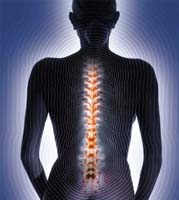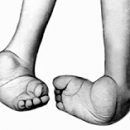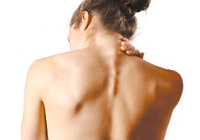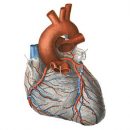Anomalies of the skeleton development can concern any of its part, including the spine. The most common anomaly is the change in the number of vertebrae in different parts of it. Read more about this disease in the article.
Content
 Spine is the main reference structure of our body. Without the spine, a person could not walk and even stand. Another important function of the spine is the protection of the spinal cord. The high frequency of the spine diseases of the modern person is due mainly to its shine, as well as a high level of injury.
Spine is the main reference structure of our body. Without the spine, a person could not walk and even stand. Another important function of the spine is the protection of the spinal cord. The high frequency of the spine diseases of the modern person is due mainly to its shine, as well as a high level of injury.
Our spine consists of vertebrals. For convenience, the vertebral pole is divided into several departments:
- Cervical department - 7 verteons
- Breast Department - 12 vertebrae
- Lumbar department - 5 verteons
- Sleepy department - 5 vertebrae
- Copchik - it consists of 1 - 3 vertebrae.
The vertebrae form a vertebral pillar. Between them are intervertebral discs. The main function of the disk is the depreciation of static and dynamic loads that inevitably occur during physical activity. Discs also serve to connect the bodies of the vertebrae with each other. In addition to the disks, the vertebra is associated with each other ligaments. There are also joints between the vertebrae, thanks to which the spine can bend.
The anomaly of the skeleton of the spine can manifest itself in a decrease or increase in the total number of vertebrae, or changing the normal number of vertebrae in a particular spine department. The abnormal development of the spine can contribute abnormalities for the development of the blades and the sacrum.
The reason for the development of the spine, as well as most of the development anomalies, is unknown.
About changing the number of vertebrae
The most common developmental abnormals associated with a change in the number of vertebrae of lumbar (lumbarization) and sacratling (sacralization) of the spine departments. Lumbalization is characterized by the presence of 6 lumbar vertebrae (instead of 5), and sacralization is characterized by the battle of the 5th lumbar vertebra with a sacrum. Sacralization and lumbarization are often considered as the cause of scoliosis (side curvature of the spine), as well as pain in this area of the spine.
Sacralization can be as true, while there is a combat of increased transverse outflow of the 5th lumbar vertebra with a sacrum, so in the form of a fight (the so-called syncondrosis) of the 5th lumbar vertebra with a cross or bones of the pelvis.
On the manifestations of the disease
Most often, this type of spine development anomaly is accompanied by pain in the lumbosacraliary. The reason for these pain is usually spondyltrosis in the field of combustion of the vertebra. In addition, osteochondrosis in the intervertebral disk is developing in this place.
Usually pains begin to disturb aged 20 - 25 years. These pains are intensified with long standing, movements, wearing severity. At times, these pains can keep in foot by imitating pain in osteochondrosis. When feeling there are pains in the field of a fragmented transverse process of the vertebra.
Typically, treatment begins with conservative events. This includes physiotherapeutic procedures, massage of the lumbar-sacral region, therapeutic physical culture, as well as wearing an orthopedic corset. Remove pains can warm hydrogen sulfide baths, paraffin applications, novocaine electrophoresis, ultrasound therapy. Heavy physical work contraindicated.
In severe cases and in the ineffectiveness of ordinary treatment, surgical treatment is shown: Remove the increased transverse process of the vertebra and simultaneously replace it with a piece of other bone (graft).









